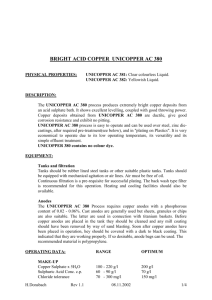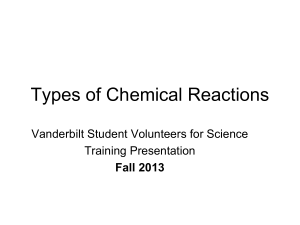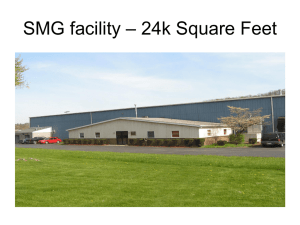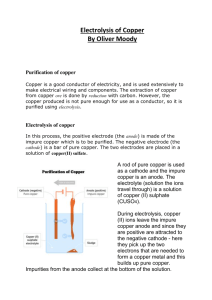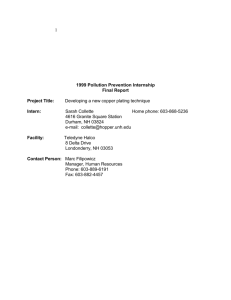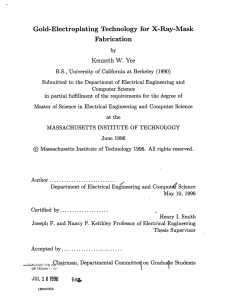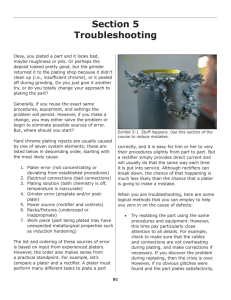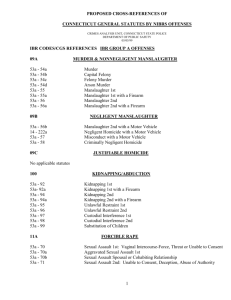CUPRA+ 52 MU / 53A/ 54 B CUPRA + 52 MU/53A/54B plating
advertisement
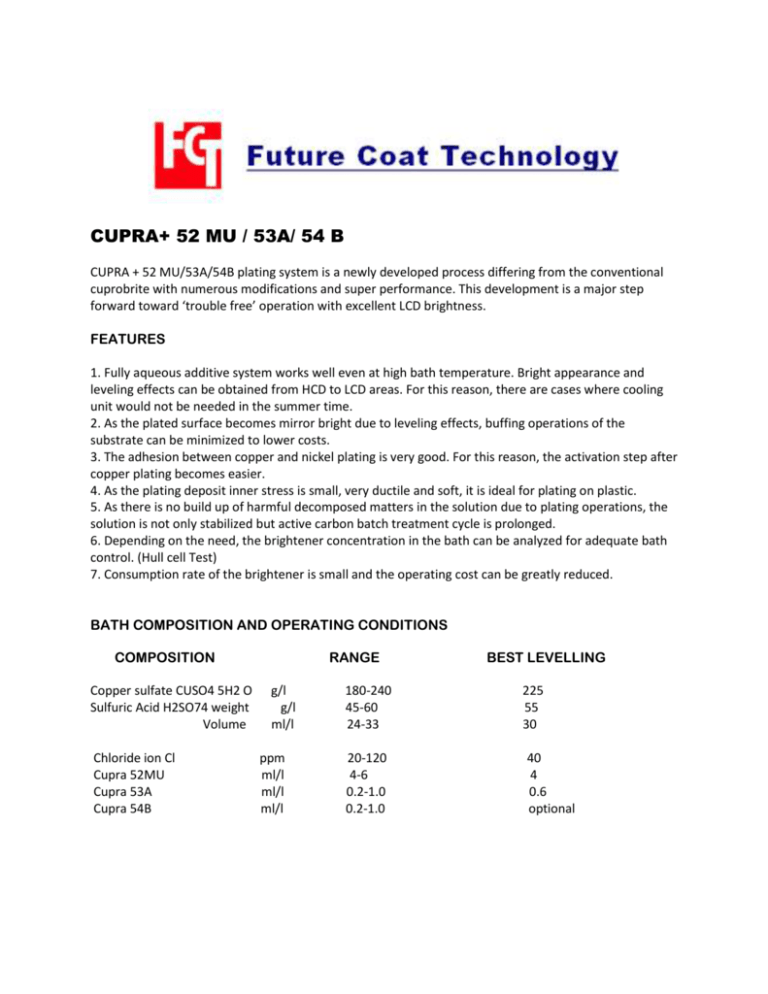
CUPRA+ 52 MU / 53A/ 54 B CUPRA + 52 MU/53A/54B plating system is a newly developed process differing from the conventional cuprobrite with numerous modifications and super performance. This development is a major step forward toward ‘trouble free’ operation with excellent LCD brightness. FEATURES 1. Fully aqueous additive system works well even at high bath temperature. Bright appearance and leveling effects can be obtained from HCD to LCD areas. For this reason, there are cases where cooling unit would not be needed in the summer time. 2. As the plated surface becomes mirror bright due to leveling effects, buffing operations of the substrate can be minimized to lower costs. 3. The adhesion between copper and nickel plating is very good. For this reason, the activation step after copper plating becomes easier. 4. As the plating deposit inner stress is small, very ductile and soft, it is ideal for plating on plastic. 5. As there is no build up of harmful decomposed matters in the solution due to plating operations, the solution is not only stabilized but active carbon batch treatment cycle is prolonged. 6. Depending on the need, the brightener concentration in the bath can be analyzed for adequate bath control. (Hull cell Test) 7. Consumption rate of the brightener is small and the operating cost can be greatly reduced. BATH COMPOSITION AND OPERATING CONDITIONS COMPOSITION Copper sulfate CUSO4 5H2 O Sulfuric Acid H2SO74 weight Volume Chloride ion Cl Cupra 52MU Cupra 53A Cupra 54B RANGE g/l g/l ml/l ppm ml/l ml/l ml/l 180-240 45-60 24-33 20-120 4-6 0.2-1.0 0.2-1.0 BEST LEVELLING 225 55 30 40 4 0.6 optional STANDARD OPERATING CONDITIONS Cathode current Density Anode current Density Bath voltage Bath Temperature Agitation Filtration Anode Anode Bag : : : : : : : : CONDITION / RANGE 3-6 A/dm² 1.5- 3 A/dm² 3–9V 24 – 40 °C Vigorous air agitation continuous filtration without Using Activated carbon. Phosphorus content: 0.04-0.08%) Appropriate brand FUNCTIONS OF BRIGHTNER AND BATH CONTROL CUPRA 52 MU is designed to produce uniform fine grained deposit of copper ions to the cathode. The surface thus accepts cupra + 52MU and as a result mirror bright copper deposit is obtained. This brightener widens the operation current density range. In the event when the higher cathode current densities are desired the concentration of the brightener may appropriately increased. Excessive concentration of this product does doses not have any adverse effect and very high does may import dullness at low current density area. CUPRA 53A import mirror shine to the deposit. Such high leveling properties of copper deposit does not show any internal stresses. Cupra + 53A produce excellent results when properly used in conjugation with cupra 52 MU & cupra 54B. During electrolysis this product produces very minimal organic biproduct, thus prolong the need for carbon treatments its major decomposition products can simply be removed by carbon pack filtration. Excessive concentration of Cupra 53A may import skip plating, but however, can be overcome by adequate addition of cupra 52MU& cupra 54B. Low concentration of cupra 53A may import hazy and dull copper deposits. CUPRA 54B acts to improve the ductility of the deposit, also improves the throwing power of the system. Lack of cupra 54B may show brittleness of copper deposit and if burning of deposit occurs, especially at higher current densities a dose of 1 ml/l is recommended .large excess addition does not have any harmful effect only it may reduce overall brightness which can be compensated by little addition of cupra 53A. The approximate consumption of this product is between 50-125 cc for 1000 Amp. hrs. Dependant on the working condition. Copper sulfate: In case the copper sulfate concentration is drastically low, it can cause burns in the HCD area or poor leveling in the LCD area and when in excess, the copper sulfate crystals out on the anode surface to cause toughness. Sulfuric Acid The main function of the sulfuric Acid is to improve the conductivity of the plating solution .if the sulfuric acid concentration increases, there is a tendency for the range of the required. The desired concentration is 45-60 g/l. Chloride Ion: For the unique function of the cupra plating system, a very small amount of chloride ion is required. However, excess chloride ion has detrimental effects on brightness and leveling. Make sure that the chloride ion does not exceed 120 ppm. When beyond the prescribed concentration, the consumption rate of the brightener will increase drastically. FILTER Continuous filtration is required. The filter cloth must be pre-coated with filter aid. It is recommended that the circulation amount be more than 3 times per hour. In case of cartridge type filter, the cartridge absorbs and consumes brighteners and therefore, can cause imbalance in brightener compositions When using numerous new cartridges, pre-dip in diluted brightener amount so that it absorbs brighteners and set in filter or circulate filter for 30 minutes with new cartridge and adjust the brightener of the solution DECHLORINATION METHOD If the chloride ion becomes more than the prescribed amount. The HCD area clouds and leveling drops. When there is excess chloride ion, carry out de-chlorination For the zinc dust to be used, select a comparatively high purity grate chemical reagent. When adding zinc dust, a large amount of hydrogen gas is generated. Therefore, be very careful of fire and exhaust gas. Zinc dust treats as follows, 1. Transfer plating solution to a reserve tank. 2. Maintain solution temperature at 21-32 °C 3. With 1-3 g/l zinc dust, make slurry beforehand with water and gradually add while agitating 4. After leaving for 30 min. add 2 g/l active carbon (1 g/l dry active carbon) continue agitating for 3 hours. 5. While agitating, add 2.5 g/l filter aid. 6. Leave still for about 3 hours. 7. By using a filter with pre-coated filter aid, filter back the purified solution to the plating tank. 8. Add brightener, amount calculated by pre-tests, adjust the solution. Causes Insufficient pretreatment Insufficient strike deposit Lack of cupra 53A Excess concentration of cupra 53A more than 5 cc/l Lack of cupra 53mu Lack of cupra 54B Copper sulfate conc. less than 180 g/l Copper sulfate conc. more than 240 g/l Sulfuric acid conc. More than 75 g/l Chloride ion conc. More than 300 pm Chloride less than 40 ppm Insufficient air agitation Bath temp. less than 21°C Bath temp. more than 40°c Solution contamination by impurities Poor copper anode or excessively high anode current density In adequate lining and auxiliary equipment Poor rinses between plating cycle Generation of algae in plating tank and water rinse tank clouds Burns LCD Area Lack of Occurrence Poor BrightPit, Ness, adhesion Roughness leveling Skip plating Brittlenesssss Uniformity Red Of powdery deposit deposit On right
